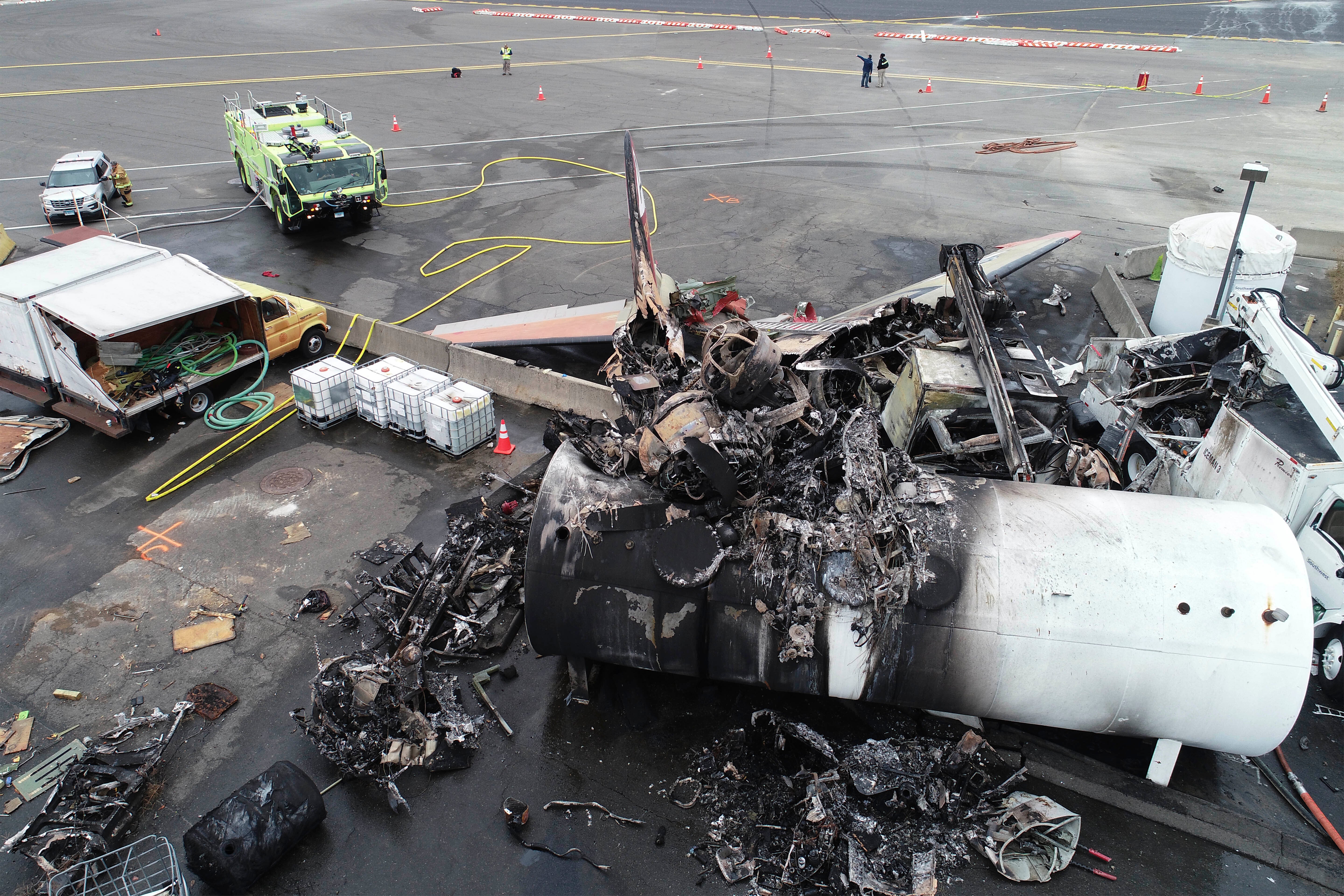Mechanic: 'Everything perfect' before fatal WWII plane crash
The only surviving crew member of a World War II-era bomber that crashed in Connecticut last year, killing seven people, told investigators that “everything was perfect” before takeoff and he doesn’t understand what went wrong

Your support helps us to tell the story
From reproductive rights to climate change to Big Tech, The Independent is on the ground when the story is developing. Whether it's investigating the financials of Elon Musk's pro-Trump PAC or producing our latest documentary, 'The A Word', which shines a light on the American women fighting for reproductive rights, we know how important it is to parse out the facts from the messaging.
At such a critical moment in US history, we need reporters on the ground. Your donation allows us to keep sending journalists to speak to both sides of the story.
The Independent is trusted by Americans across the entire political spectrum. And unlike many other quality news outlets, we choose not to lock Americans out of our reporting and analysis with paywalls. We believe quality journalism should be available to everyone, paid for by those who can afford it.
Your support makes all the difference.The only surviving crew member of a World War II-era bomber that crashed in Connecticut last year, killing seven people, told investigators that “everything was perfect” before takeoff and he doesn't understand what went wrong, according to federal documents released Wednesday.
Mitchell Melton was the mechanic aboard the four-engine, propeller-driven B-17G Flying Fortress bomber that crashed at Bradley International Airport north of Hartford on Oct. 2, 2019. He is a key witness in the investigation by the National Transportation Safety Board which has not yet determined the cause of the accident.
The NTSB made documents in the investigation public on its website Wednesday, including a transcript of a nearly two-hour interview with Melton in November 2019. Melton has not returned messages seeking comment, including one left for him Wednesday by The Associated Press.
Melton, 35, of Frankston, Texas, did say there were problems trying to start two of the plane s engines on the morning of the crash. But both started after he blew nitrogen into them to get rid of condensation than can build up on humid mornings — a procedure that representatives of the plane's owner said is frequently used by airplane mechanics, but one an NTSB official said is “not a documented maintenance procedure,” according to the documents.
The other two engines started without a problem, and the flight was ready for takeoff, he said. Aboard were Melton, the pilot and co-pilot, along with 10 passengers who paid $450 to fly aboard the aircraft. The plane was featured among a traveling vintage airplane show run by the Collings Foundation, based in Stow, Massachusetts.
“And that morning, everything was perfect,” Melton told NTSB investigators. "I mean, we had no drop, we had no backfire. We had nothing. I mean, there was no reason not to fly, you know.”
The plane crashed into a maintenance building at the airport while trying to land after the No. 4 engine began losing power shortly after takeoff, the NTSB said. Melton told officials that the No. 4 was the best-running engine of the four.
“That’s why I don’t understand what happened,” Melton said, according to the transcript.
In the air, as the engine was losing power, the 75-year-old pilot, Ernest “Mac” McCauley, of Long Beach, California, told Melton he wanted to shut off No. 4. But Melton replied he wasn't ready to do that and didn't understand why the engine had to be shut off, the documents say. McCauley shut off the engine anyway, Melton said.
McCauley and co-pilot Michael Foster, 71, of Jacksonville, Florida, tried to return to the airport. They made it to the runway area, but the plane struck several ground lights short of the runway, veered off into the maintenance building and caught fire.
Melton, who told everyone aboard to sit back down and put their seat belts as the plane tried to land, survived the impact and suffered an arm injury. He was able to get out seconds before flames overtook the wreckage by pushing out some plexiglass and jumping out. Two passengers who followed him out said they're not sure they would have survived if it weren't for Melton, according to the documents.
McCauley, a veteran pilot whom colleagues said had great skills flying the B-17G, was killed in the crash, as were Foster and five passengers. Blood tests showed no intoxicating substances in their systems.
The passengers killed included Gary Mazzone, of East Windsor, Connecticut; Robert Riddell, of East Granby, Connecticut, James Roberts, of Ludlow, Massachusetts; David Broderick, of West Springfield, Massachusetts; and Robert Rubner, of Tolland, Connecticut.
After the crash, the foundation suspended its flights and tour for the rest of the year. In March, the Federal Aviation Administration revoked the Colling Foundation's permission to carry passengers aboard its World War II-era planes because of safety concerns stemming from the Bradley accident.
The foundation also is being sued in Connecticut state court by relatives of those killed and survivors. Lawyers for the foundation denied wrongdoing in court documents.